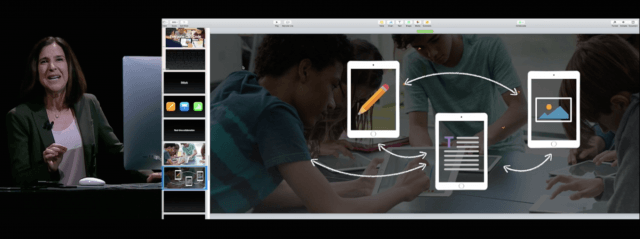it will be no more rumors, the iPhone 7 was finally presented by Apple! some differences have been introduced compared to the previous model, but as usual, Apple has almost a “PhD” to make their “new” look extremely magical and revolutionary.
There is no problem admitting that the iPhone 7 is extremely elegant and pleasing to the eye, because it is an obvious fact and almost always works simply and fluidly. But the truth is that Apple is long overdue in many technological fronts and as usual began to update on some features, but it did seem that just hit great things revolutionaries.
-
photographic module with dual-camera (iPhone 7 Plus)
This new trend of manufacturers to place dual-camera on the back of the devices already It began some time ago in Android smartphones. Began with HTC and has been followed by several other manufacturers like LG and Huawei.
However, the objectives with this type of setup are quite different between manufacturers. In the case of the iPhone 7 Plus, Apple put two sensors 12 megapixewls, one for normal pictures and another for long distance shots.
-
Effect “Bokeh” (focus only on the first plan)
This is a photographic term referring to the ability of cameras (usually with fast apertures) to concentrate its focus on the main subject, creating a pleasant effect of ” blur “in the outer planes.
This technique was first brought by HTC with the One M8, which despite getting some results with the technologies available at the time, did not always work as desired. Google also implemented this type of effect on your camera application, which offers quite impressive results for something that was achieved 100% through software.

In the case of iPhone 7 Plus, we can say that Apple has managed to achieve very good results, with the pictures come to life with a natural and authentic appearance. As you can see in the picture above, the photo is almost worthy of a DSLR camera and therefore, congratulate Apple for this implementation.
-
IP67 certification, water resistant and dust
Finally Apple! With so many Android smart phone manufacturers to offer resistance to water and dust certification, Apple finally decided to update and check certification IP67 to your new iPhone 7. Nevertheless, it is still not enough to reach the level of other manufacturers such as Samsung, for its smartphones have IP68 certification. The difference between these two certificates is that the iPhone, only resistant to water submersion 1 meter in 30 minutes and in case of their Samsung devices can be submerged up to 1.5 meters for 1 hour.
This is a feature that is expected to be implemented by many other Android smartphone manufacturers, but Apple finally implemented stereo playback on iPhone 7. Apple used the combination of columns placed in device background with this column calls the device the top to achieve this type of audio playback. However, nothing can compare to the HTC 10, 5X Nexus or Nexus 6P

Apple” was the moon and back “when he made the presentation of his new A10 processor, whereas the his greatest achievement was its quad-core architecture, which at least in theory is a little sad when we remember that quad-core processors come to Android devices. Of course we can not forget that the performance of a device is much more important than the number of cores of the processor, but still … Apple is five years late with regard to the architecture of its processors.
-
real-time collaboration in iWork

the iWork suite of applications from Apple, which includes the Pages application, Numbers and Keynotes (basically all applications that Microsoft Office offers), does not offer the possibility of collaboration between several people in real time. This feature will allow any changes made in a document by a user, can be viewed in real time on account of another user. The truth is that this functionality is great, but Google Drive for Android has implemented it at 4 years ago …
No comments:
Post a Comment